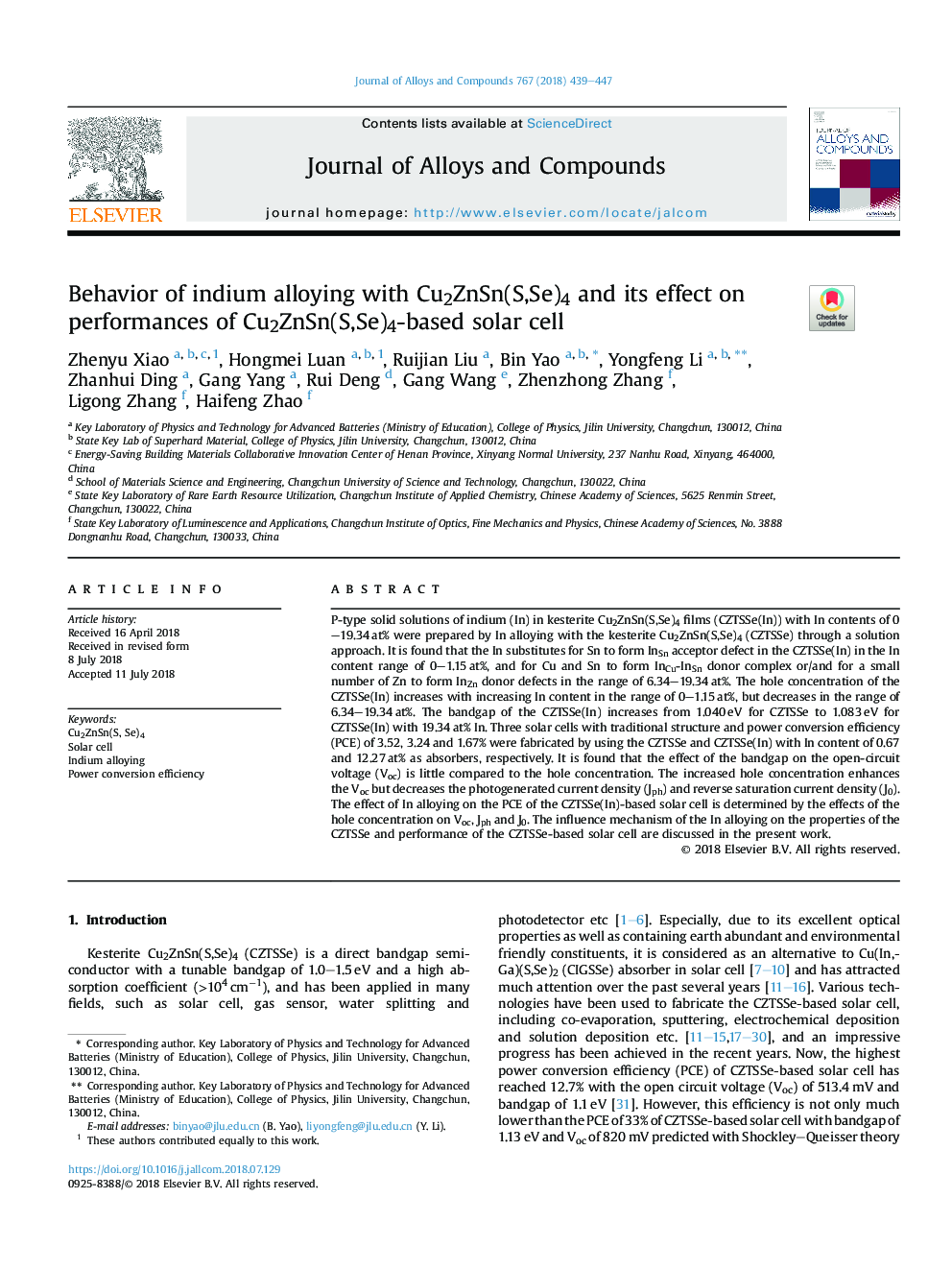| Article ID | Journal | Published Year | Pages | File Type |
|---|---|---|---|---|
| 7990294 | Journal of Alloys and Compounds | 2018 | 9 Pages |
Abstract
P-type solid solutions of indium (In) in kesterite Cu2ZnSn(S,Se)4 films (CZTSSe(In)) with In contents of 0-19.34â¯at% were prepared by In alloying with the kesterite Cu2ZnSn(S,Se)4 (CZTSSe) through a solution approach. It is found that the In substitutes for Sn to form InSn acceptor defect in the CZTSSe(In) in the In content range of 0-1.15â¯at%, and for Cu and Sn to form InCu-InSn donor complex or/and for a small number of Zn to form InZn donor defects in the range of 6.34-19.34â¯at%. The hole concentration of the CZTSSe(In) increases with increasing In content in the range of 0-1.15â¯at%, but decreases in the range of 6.34-19.34â¯at%. The bandgap of the CZTSSe(In) increases from 1.040â¯eV for CZTSSe to 1.083â¯eV for CZTSSe(In) with 19.34â¯at% In. Three solar cells with traditional structure and power conversion efficiency (PCE) of 3.52, 3.24 and 1.67% were fabricated by using the CZTSSe and CZTSSe(In) with In content of 0.67 and 12.27â¯at% as absorbers, respectively. It is found that the effect of the bandgap on the open-circuit voltage (Voc) is little compared to the hole concentration. The increased hole concentration enhances the Voc but decreases the photogenerated current density (Jph) and reverse saturation current density (J0). The effect of In alloying on the PCE of the CZTSSe(In)-based solar cell is determined by the effects of the hole concentration on Voc, Jph and J0. The influence mechanism of the In alloying on the properties of the CZTSSe and performance of the CZTSSe-based solar cell are discussed in the present work.
Related Topics
Physical Sciences and Engineering
Materials Science
Metals and Alloys
Authors
Zhenyu Xiao, Hongmei Luan, Ruijian Liu, Bin Yao, Yongfeng Li, Zhanhui Ding, Gang Yang, Rui Deng, Gang Wang, Zhenzhong Zhang, Ligong Zhang, Haifeng Zhao,
